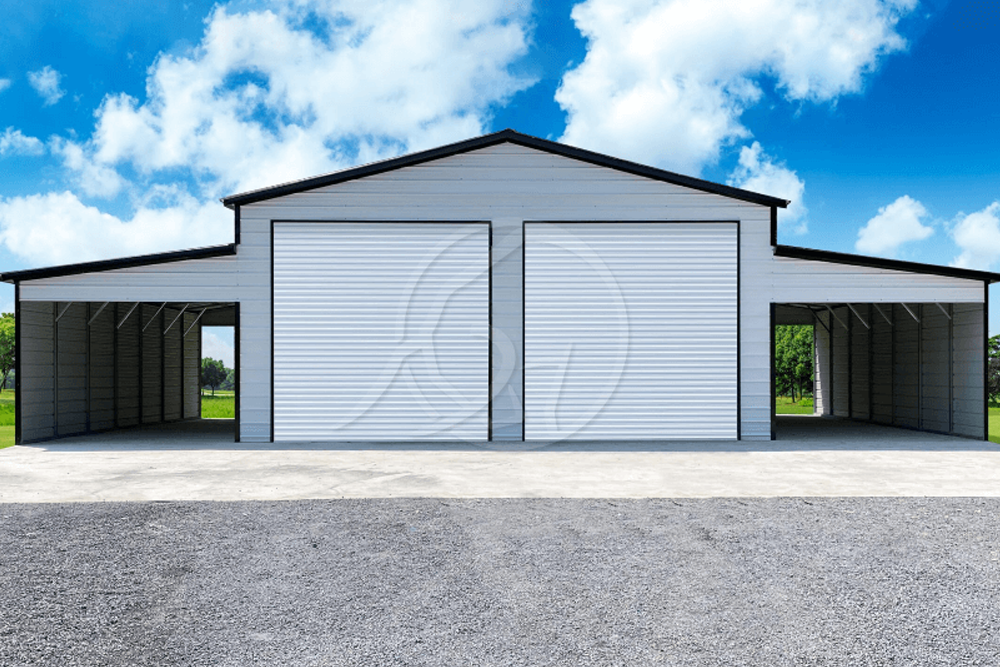
Insulation is one of the most important factors to consider. Without it, the interior can become unbearably hot in summer and freezing in winter. Insulation helps regulate temperature, reduces condensation, and makes the space more comfortable year-round. It also prevents moisture buildup, which can lead to rust and long-term structural damage.
For anyone asking, “how much does it cost to insulate a metal building?” the answer depends on several factors. The type of insulation, the size of the building, and the installation method all influence the final cost. Choosing the right insulation ensures you get the best energy efficiency while protecting your investment.
Whether you’re working on a new project or retrofitting an existing structure, insulation makes a significant difference. It keeps utility bills lower, improves noise control, and adds long-term value. Even in buildings that don’t require climate control, insulation helps prevent temperature swings that could affect stored equipment, vehicles, or tools.
Factors That Affect Insulation Costs
The cost of insulating metal buildings varies based on the material chosen, the thickness of the insulation, and the complexity of installation. A larger structure naturally requires more material, increasing both supply and labor costs. The choice of insulation type—whether fiberglass, spray foam, or reflective barriers – also plays a role. Some options offer better thermal resistance, while others focus primarily on moisture control.
If you’re wondering how much does it cost to insulate a 20×20 garage, the answer depends on how well you want it insulated. A basic layer of insulation will provide some temperature control, but for year-round comfort, a thicker application may be needed. Additionally, installation method matters. A DIY approach can reduce expenses, while hiring professionals ensures a more precise and durable installation.
Local climate conditions should also be taken into account. In regions with extreme temperatures, higher-quality insulation can pay for itself in energy savings. Buildings located in humid areas require insulation that prevents condensation and mold growth. Insulation installed during the initial construction phase is typically more affordable than adding it later, since retrofitting can be more labor-intensive.
Choosing the Right Type of Insulation
There are several insulation materials available, each with its own advantages. Fiberglass is one of the most common choices, offering a balance of affordability and effectiveness. It comes in blanket rolls or batts that can be installed between metal panels and framing. This type of insulation works well in larger structures and provides good thermal resistance when installed correctly.
Spray foam is another option, known for its ability to seal gaps and eliminate air leaks. It expands upon application, creating an airtight barrier that enhances energy efficiency. This type of insulation works particularly well in buildings with complex designs or difficult-to-reach areas. However, spray foam is generally more expensive than other materials.
Reflective insulation, sometimes called radiant barriers, is commonly used for moisture control rather than temperature regulation. It consists of a foil-backed material that prevents condensation from forming on interior surfaces. While this type of insulation does not provide the same thermal resistance as fiberglass or spray foam, it is a useful option for buildings in mild climates or those primarily used for storage.
How To Insulate a Metal Building Roof Effectively
The roof is one of the most important areas to insulate in a metal building. Since heat rises, an uninsulated roof allows warmth to escape in winter and invites excessive heat during summer. Proper insulation prevents these issues while also protecting the roof panels from condensation buildup.
The best way to insulate a metal building roof depends on the structure’s design. In new construction, insulation is typically installed between the outer panels and framing. This creates a seamless barrier that improves energy efficiency. In existing buildings, insulation is either applied to the interior roof surface or added as a secondary layer between purlins.
Using a double-layer system is one of the most effective ways to insulate a roof. The first layer is placed directly under the metal panels, while a second layer fills the remaining space between the framing. This setup eliminates air pockets and reduces heat transfer. Spray foam can also be applied to the roof for a tight seal, particularly in structures with irregular shapes or exposed beams.
For those planning to install insulation themselves, proper ventilation must be considered. A well-ventilated space prevents trapped moisture, which can lead to mold growth and corrosion. In some cases, adding a vapor barrier along with insulation provides an extra layer of protection against moisture-related issues.
Installation Methods: DIY vs. Professional Insulation
Once you’ve chosen the best insulation for your metal building, the next step is deciding whether to install it yourself or hire professionals. While some insulation types are easier to handle, others require specialized equipment and expertise.
For those with construction experience, a DIY installation can be a cost-effective option. Fiberglass blankets or batts are relatively straightforward to install, especially in new construction where they can be placed between the framing and metal panels before assembly is completed. Reflective insulation, which mainly serves as a vapor barrier, is also manageable for those willing to take the time to secure it properly. However, even DIY-friendly insulation requires careful handling. Poor installation can create gaps, leading to heat loss, condensation problems, and reduced energy efficiency.
Spray foam insulation, on the other hand, is best applied by professionals. The material expands as it is sprayed, filling gaps and sealing air leaks in the process. However, improper application can lead to uneven coverage and waste. Additionally, spray foam contains chemicals that require safety precautions during installation. Hiring a professional ensures that the insulation is applied correctly and consistently, maximizing its benefits.
For those insulating an existing structure, hiring professionals can save time and effort. Retrofitting insulation into a completed building often involves maneuvering around obstacles like electrical wiring, plumbing, and storage areas. Professionals have the experience to work efficiently, ensuring full coverage without damaging the building’s existing structure.
Long-Term Benefits of Insulating a Metal Building
The upfront cost of insulation may seem like a significant investment, but the long-term savings make it worthwhile. A properly insulated metal building lowers heating and cooling expenses by reducing heat transfer. This not only saves money but also makes the space more comfortable year-round. Insulation prevents drafts, reduces temperature fluctuations, and keeps the building’s interior more stable.
Beyond energy savings, insulation protects the building itself. Metal structures are prone to condensation when warm air meets cold surfaces. Without insulation, this moisture can lead to rust, corrosion, and structural damage over time. Insulating the roof and walls creates a barrier that prevents condensation from forming, extending the lifespan of the building.
Noise reduction is another overlooked advantage. A metal building without insulation can amplify sounds from heavy rain, wind, or machinery. Insulation absorbs these noises, creating a quieter and more functional space. For those using a metal building as a workshop, garage, or storage area, soundproofing can make a noticeable difference in usability.
Additionally, an insulated metal building holds its value better over time. Whether you plan to use it for personal storage, as a workspace, or even for business purposes, proper insulation makes the structure more versatile and efficient. If the building is ever resold, buyers will see greater value in a well-insulated space that requires fewer upgrades.
At Bull Buildings, we understand that finding the right insulation is just as important as choosing the right metal structure. That’s why we don’t just offer one-size-fits-all solutions. Instead, we work with 28 suppliers to ensure our customers get the best option for their specific needs. Whether you’re insulating a new metal garage or upgrading an existing structure, we help match you with the right manufacturer and materials.



